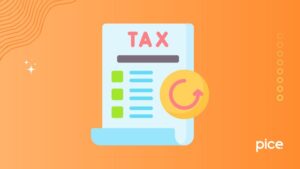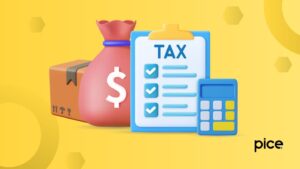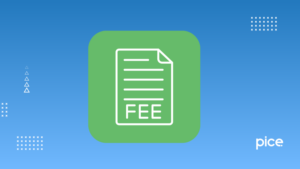Detailed Guide About GST Refund of Exceed Tax Paid
- 4 Sep 24
- 10 mins
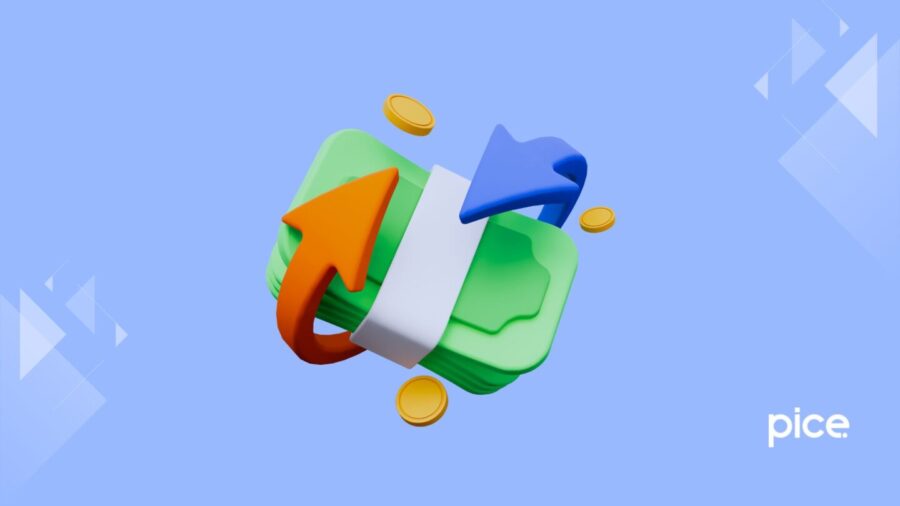
Detailed Guide About GST Refund of Exceed Tax Paid
Key Takeaways
- Claim within 2 Years: Refunds for excess GST must be claimed within two years from the invoice date.
- Accurate Filing: Double-check GSTIN and tax heads to avoid errors requiring refunds.
- Proper Documentation: Attach all required documents, especially for refunds over ₹2 lakh, verified by a CA.
- Use Form GST RFD-01: File refund claims online via Form GST RFD-01 on the GST portal.
- Minimum Refund of ₹1,000: Refund claims must be for at least ₹1,000 to be processed.
Businesses look forward to claiming refunds wherever applicable as it helps maintain an overall balance. After the advent of the Goods and Services Tax, many decisions have been taken from time to time to help registered taxpayers comply more easily.
Still, there are some people new to the business realm who may remain confused regarding what is refund of excess payment of tax in GST. This procedure is highly organised and yet is not rigid for all entities. Depending on the situation the refund process is tailored to suit the purpose.
In this blog, the whole process of filing refund claim on excess GST paid has been covered. In addition, the requisites to initiate an application for refund have been discussed.
What Is the Refund of GST on Excess Tax Paid?
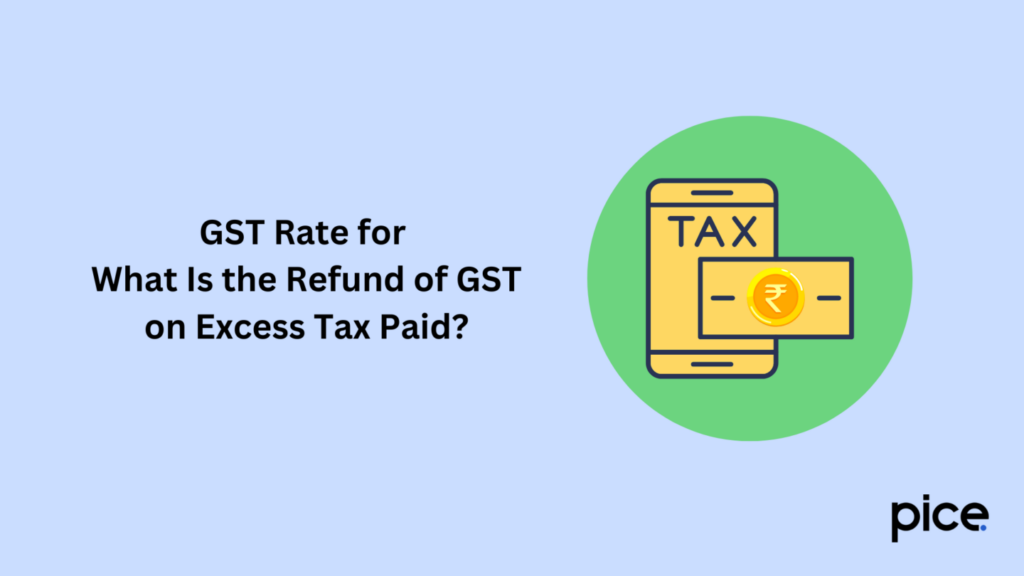
It is not uncommon for a taxpayer to miscalculate their tax liability in certain instances. Thus, in those situations, they often may end up contributing more GST or paying their taxes under the wrong heads. During these situations, it is possible to claim a refund of excess payment of tax in GST by following some prescribed steps.
The authorities receive such applications and process the refund after verifying the validity of the ITC on input services and products.
When the ITC is provisionally accepted, the concerned taxpayer receives back 80% of the claim amount as a provisional refund. The remaining balance 20% may be refunded after confirming the ground of refund.
Situations Where the Excess Payment of GST Arises
Probably you are right now stuck in a situation where you may be wondering whether the already paid GST is refundable or not. Let us clarify your doubts.
In accordance with the GST refund rules, a taxpayer can mistakenly pay extra GST in many situations. As the associated documents are all filed via CAs or accountants, there remains a considerable chance of manual errors.
Moreover, some taxpayers pay their taxes beforehand (also referred to as advance taxes). In these scenarios, there can be excess unutilised GST amount in the electronic credit ledger because of low volumes of transactions. So, the taxpayer can claim a refund to get back the excess amount paid.
Here we have listed below the most likely scenarios where an entity may ask for a refund of excess payment of tax in GST:
- Wrong GST Head
It is the most common possibility where one can claim a refund of wrongly transferred GST. There are typically three heads under the GST regime: CGST, SGST and IGST. If you complete the transaction under the wrong head then you may file the relevant GST Return Form to claim your loss.
- Erroneous Tax Amount Calculation
GST calculation mistakes can take place while filing Form GSTR-3B. These faults can be later on rectified by accountants and businesses can claim refunds against excess tax payments.
- Incorrect GSTIN
Every business has its unique GSTIN. Therefore, owners can casually make mistakes by entering the wrong GSTIN while paying taxes for one of their many businesses. This results in wrong payment and thus needs to be revised at a later stage.
- Refund for Casual Taxpayers
Here, casual taxpayers are dealers or suppliers having no particular place of supply. They deal in taxable commodities or services occasionally. These CTPs rely on temporary GST registrations and must pay GST in advance to comply with the GST Act. After their GST registration is over, if any excess tax amount stays unutilised then they can claim it legally.
- Refund of Late Fees, Interests and Penalties
As a registered taxable person, you are eligible to claim GST refunds for erroneously stated paid late fees and against penalties under the ‘Excess Tax Paid’ column.
- Advance Tax Payment
If you are a business owner paying GST in advance for the invoices that you have not received, you can initiate a GST claim under ‘Excess Tax Paid’ for all the unsettled bills. It is a regulation that is aimed to assist suppliers in cases when their orders get cancelled.
These are the most commonly arising scenarios, triggering a tax refund but there can be other similar situations as well. You need to avail the refund application form to file your claim request.
How to Claim a GST Refund of Excess Taxes Paid - Form GST RFD-01
You can proceed towards filing of form for the GSTR or GST refund form after confirming the eligibility particulars. Applications must be submitted via Form GST RFD-01 which can be accessed on the common GST portal by any taxpayer.
After verification, the refund of tax is made to the taxpayer’s Electronic Cash Ledger.
Here’s a brief breakdown of how to claim the GST refund on excess tax paid online:
Step 1: Log in to your GST account with GSTIN which is eligible for a refund.
Step 2: Navigate to the 'Services' tab. Click on ‘Refunds’ followed by ‘Application for Refunds’.
Step 3: Pick the header ‘Excess Payment of GST’.
Step 4: Mention the appropriate Financial Year and Month using the drop-down list.
Step 5: Click on ‘Create’.
Step 6: Access the Form GST RFD-01.
Step 7: Provide the tax values that you want as a refund under the Table ‘Details of Excess Payment of Tax’. Here you must mention the basis of refund.
Step 8: Select your bank account number using the list.
Step 9: You can further add supporting documents by clicking the ‘Add Documents’ tab.
Step 10: Click on ‘Save’.
Step 11: If you want to download the form in PDF format, click on the PREVIEW button.
Step 12: Check the box against ‘Undertaking & Self-declaration’.
Step 13: Click on ‘Proceed’.
Step 14: Select the ‘Declaration’ box as the next window appears.
Step 15: Select an ‘Authorised Signatory’.
Step 16: Now you must choose between two refund types: ‘File with DSC’ or ‘File with EVC’.
Step 17: In the case of DSC, select the certificate and click on the SIGN button.
Step 18: In the case of EVC, you must verify the OTP sent to your device by clicking on the VERIFY button.
Step 19: A success message appears on the mobile phone screen.
Step 20: The ARN is downloaded and you get it via your registered email address and mobile number. Save it to check the refund status in the future.
Eligibility Criteria
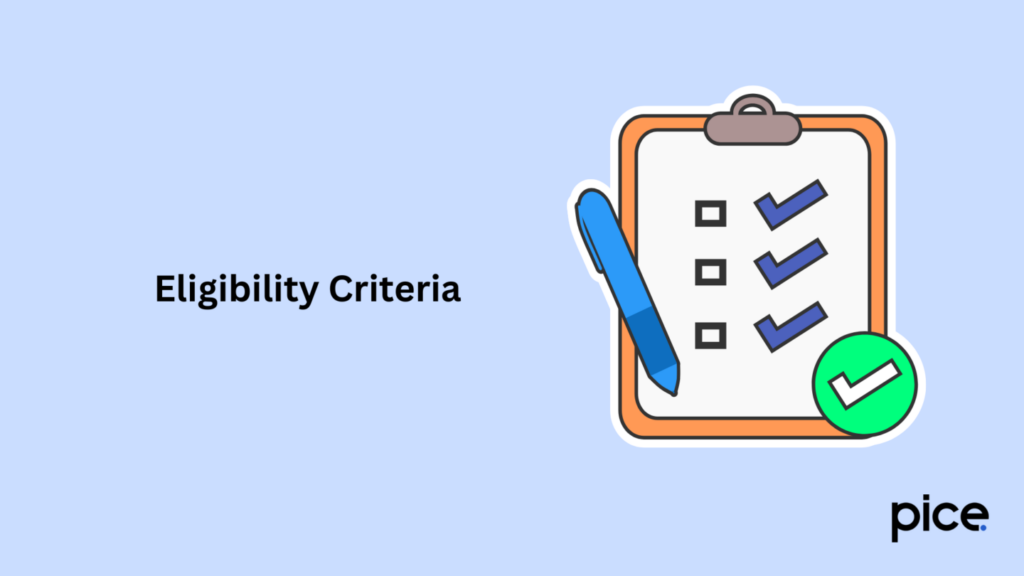
A person eligible to claim a GST refund on the excess amount paid must fulfil the following criteria:
- They must be a taxpayer under regular assessment or casual taxpayers filing GSTR-3B.
- Otherwise, they can be composite taxpayers who have already filed GSTR-4.
- NRIs who have filed Form GSTR-5 can file a GST refund request mentioning the refund type“Excess Payment of Tax”.
The minimum refund amount has to be ₹1,000 to initiate the claim settlement process.
In the upcoming section, you can see some prerequisites that need to be mandatorily followed before or while updating the GST return filing form.
- When the refund amount exceeds ₹2 lakh then you must attach a CA certificate with the refund application while submitting the form.
- Refund applicants can file a form for a specific financial year only. No taxpayer is allowed to club different return periods while filing refund applications.
- The digital documents attached to the form should not exceed 5MB size each.
- The maximum refund amount cannot exceed the tax amount already paid by the person.
- You must be a regular filer to be eligible for claiming a refund.
Moreover, there are certain time restrictions specified for the period of refund.
- You can claim a refund within two years from the date of invoice generation.
- When the Tax Official has no objections to the refund request form and the supporting documents then he can initiate a sanction of refund within 2 months (60 days) starting from the date of refund application.
Documents Required
When it comes to claiming a GST refund on the excess tax amount paid, filing the online application form simply is not enough. In addition to the GST RFD-01, you must attach all the relevant documents stating accurate details.
For instance, when the refund amount exceeds ₹2 lakh, then you should get the form verified by a chartered accountant. They issue a certificate that accompanies the refund application.
You can learn about the complete list of documents from the refund-sanctioning authorities. To get their contact details, you can head to the unified GST portal. In cases where some of the documents may be missing then the authorities send you a deficiency memo as GST RFD-03. You are presented with a deadline within which you must resubmit the application after attaching all the requested documents.
Conclusion
It is essential to know the process of refund of excess payment of tax in GST as all suppliers dealing with taxable supplies need to submit Form RFD-01. Wrong submissions lead to delays in the disbursal of the refundable amount and makes the process more complex.
Thus, you can refer to this blog to ascertain the eligibility criteria and documents required before initiating your claim for a flawless filing.
💡If you want to pay your GST with Credit Card, then download Pice Business Payment App. Pice is the one stop app for paying all your business expenses.
 By
By 








